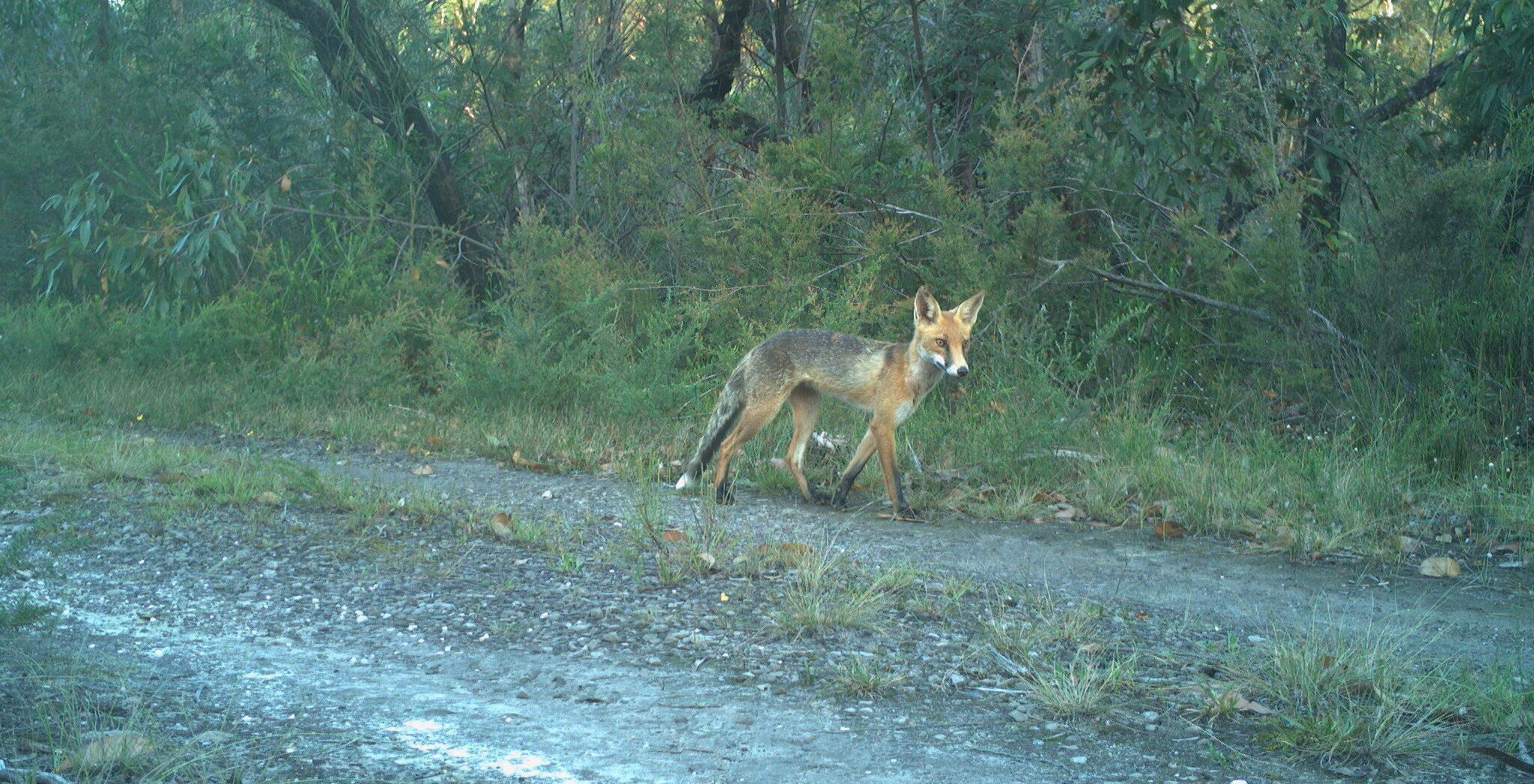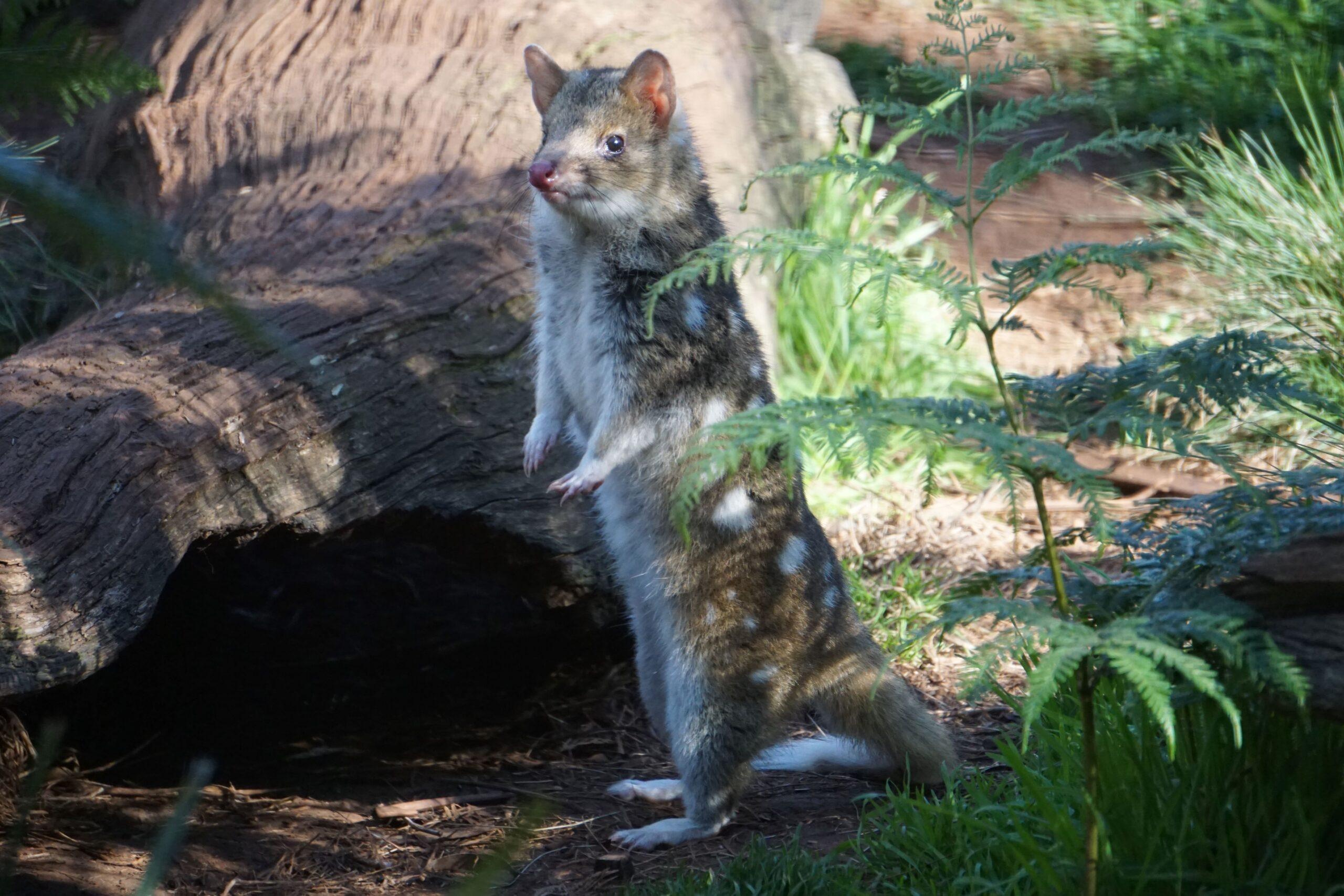Project start date: 01/09/2023
Project end date: 30/11/2025
NESP funding: $584,000 (GST-exclusive)
Booderee National Park has been controlling foxes in the park for 20 years. In that time, several attempts have been made to reintroduce locally extinct species. These include the eastern quoll – a priority species under the Australian Government’s Threatened species action plan 2022–2032. Sadly, the success of these reintroduction programs has been repeatedly hampered by fox incursions and subsequent catastrophic predation.

A red fox strolling through Booderee National Park. Image: Parks Australia.
 An eastern quoll on the lookout. Image: Dion Maple, Parks Australia.
An eastern quoll on the lookout. Image: Dion Maple, Parks Australia.
We’re providing improved local data and broader ecological knowledge about foxes. This will help park managers and local Traditional Owners develop tailored management interventions for the park and apply best-practice fox management in the medium term to long term.
This is a collaborative project, involving on-ground work by hub researchers, national park managers and local Wreck Bay Bherwerre Rangers. As part of the project, rangers will be trained in the use of VHF telemetry equipment, animal handling and camera trapping. The involvement of Bherwerre Rangers will link to other hub initiatives, including the ‘Indigenous monitoring platform’ project.
Key research areas
To address the challenges of fox predation preventing the reintroduction of native species, this project is:
No resources found.
Project leader
The project is being led by Dr Paul Meek from the NSW Department of Primary Industries. This project will contribute to the following cross-cutting initiative:
Contact
For further information, contact paul.meek@dpi.nsw.gov.au or nesplandscapes@uwa.edu.au.
Research users
People